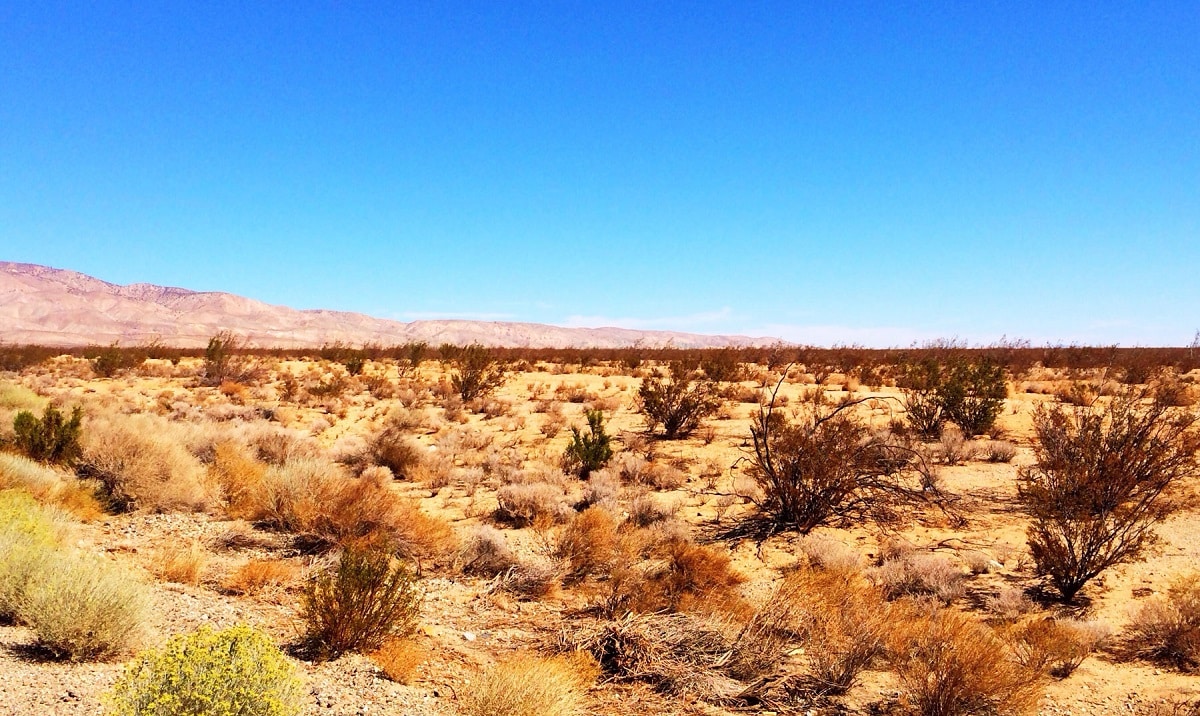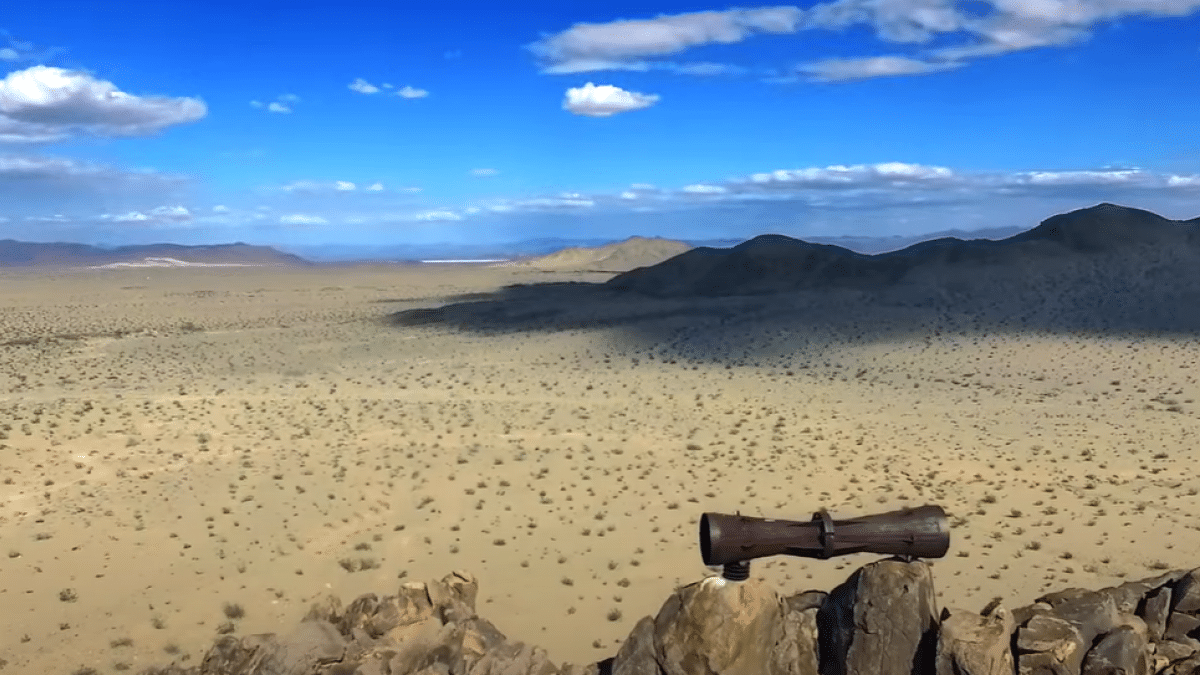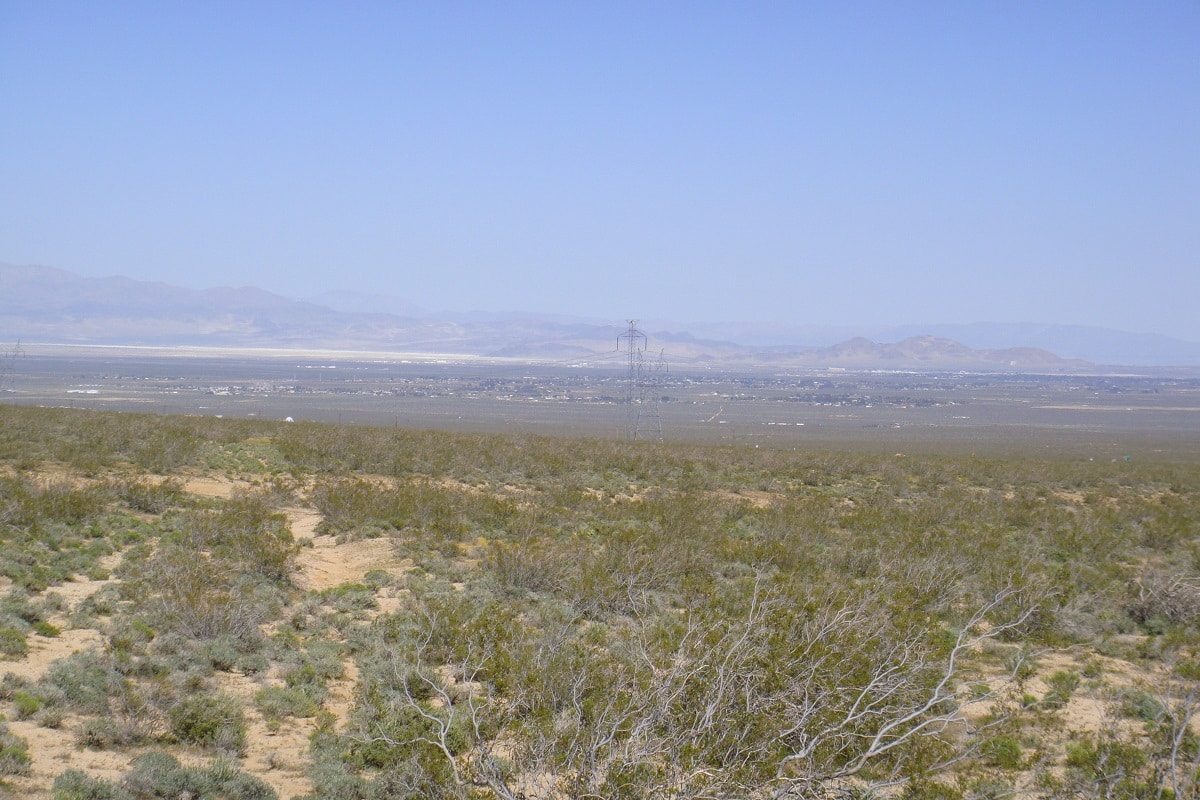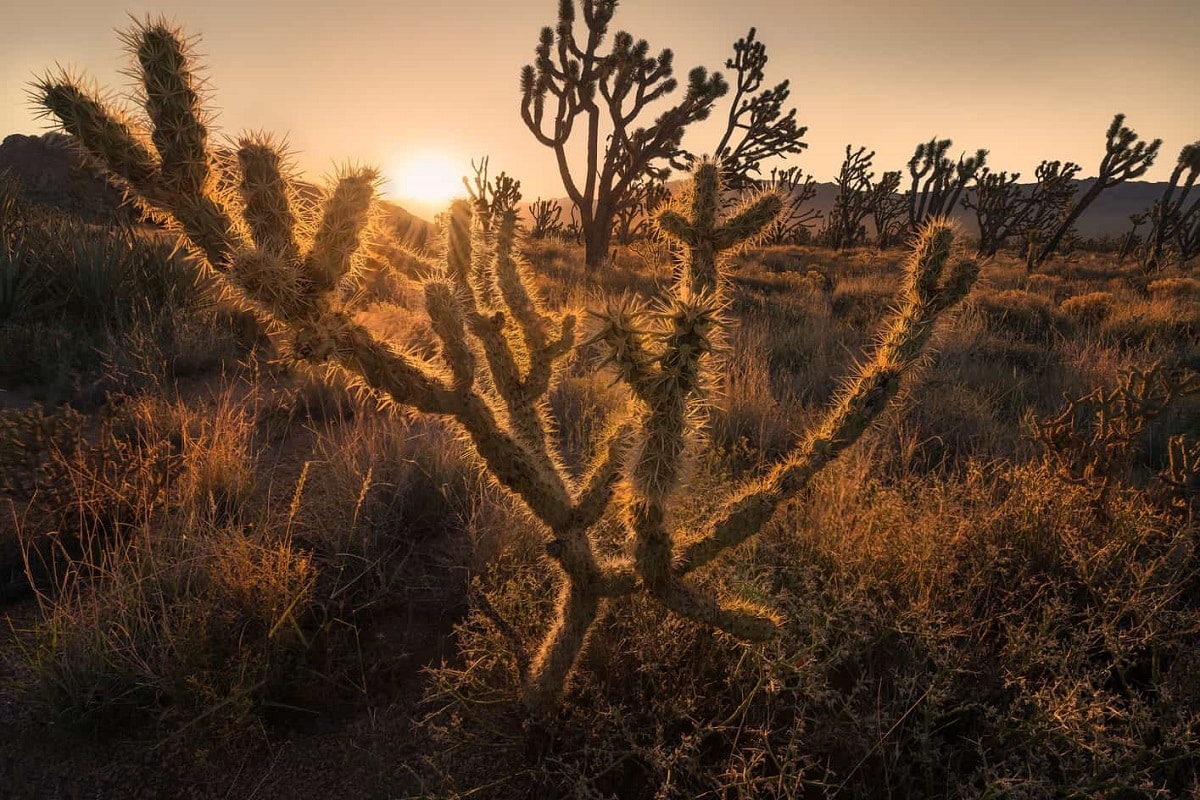and some
El Mojave desert It is located in the southwestern United States and is divided into the states of California, Nevada, Utah, and Arizona. Its more or less extended area is about 130.000 square kilometers. It is the smallest of the North American deserts, but also the driest.
In this article we are going to tell you everything you need to know about the Mojave desert, its characteristics, flora, fauna, tourism and much more.
geography and geology

The Mojave Desert is located in the southwestern United States, encompassing parts of California, Nevada, Arizona, and Utah. This desert extends for approximately 122,000 square kilometers, making it one of the largest deserts in North America.
In this desert we find wide desert plains, interrupted by mountains and rolling hills that rise majestically on the horizon. Elevations range from low valleys to mountain tops, reaching heights of more than 3,350 meters in the San Bernardino Mountains.
One of the most notable features of the Mojave Desert are the famous sand dunes. These dunes, like those in the Kelso Dunes National Park, are formed from the accumulation of sand driven by the prevailing winds. The shapes and sizes of the dunes vary, creating a truly picturesque desert landscape.
In this desert we can find a system of canyons and gorges. The best known of them is the Devil's Canyon. It is a gorge sculpted by water erosion over millions of years. These canyons offer a unique view of the exposed rock layers, with which you can learn about the geological history of the desert.
Regarding the geology, much of the region is made up of sedimentary rocks, such as sandstones and conglomerates, that were formed from the accumulation of sediments in ancient lakes and rivers. There are also volcanic rocks, the result of past volcanic activity in the area.
The desert is home to a variety of minerals, including gold, silver, and copper, which have attracted the attention of fortune seekers throughout history. In addition, the geology of the desert has given rise to fascinating rock formations, such as the giant monoliths of Joshua Tree National Park and the famous limestone formations known as the Joshua Rocks.
Mojave Desert Climate

The Mojave Desert is the hottest place in North America. Its hottest point is Death Valley, where temperatures of up to 49º C have been recorded. There are two well-differentiated seasons: in winter, the average daytime temperatures are more pleasant and the nighttime minimums are below 0ºC, due to the scarcity of rainfall in the Pacific Ocean (50 mm per year). Summer, on the other hand, is characterized by drought and high temperatures.
Wind is the most important weather phenomenon in the Mojave Desert. This is a warm wind that blows from the interior to the west coast all year long, sometimes very fast.
As for the temperature of the place, it varies between 2 degrees Celsius and 36 degrees Celsius for most of the year. There are rare cases where the temperature can drop below 3°C. In its west, winter temperatures are cool and very cold, reaching 13°C. These temperatures are less extreme than those in central and eastern Mojave due to the influence of the ocean in western Mojave. In its central part, winters are mild, but summers are unusually hot with temperatures reaching 49°C. In the east, winters are also cool, with nighttime temperatures often dipping below freezing.
During the day, the Mojave Desert experiences very high and extreme temperatures, mainly in summer. The average relative humidity during the day is between 10% and 30%. Temperature fluctuations of up to forty degrees in one day are typical.
Humidity can reach 50% at night. With infrequent rainfall, humidity is highest at the front and rear and tends to increase at night and in winter and decrease during the day. At night, you can observe the numerous animal species that inhabit the area.
Flora and fauna of the Mojave desert

The variety of habitats that exist in the Mojave Desert is home to approximately 300 species of fauna, with a total of 36 species of reptiles, 206 species of birds and 47 species of mammals that have been documented. Some of the more well-known species are the Gila monster, desert tortoise, Mojave goral, Mojave tassel, ring-necked kingsnake, and desert whipsnake.
Important birds include the prairie hawk, Bendale condor, California condor, golden eagle, mourning dove, and Gambe's quail. This site is also home to one of the most important bat faunas in the California desert. There are also populations of rock squirrels, black-footed wood rats, mule deer, porcupines, cougars, and desert bighorn sheep.
As for the flora, it includes creosote bushes, large scale bushes, crisp bark bushes, desert holly, white hedgehogs, and Joshua trees, the latter considered the most important endemic species in the region. The area is home to many species of cacti, including several endemic species such as the silver jolla, Mojave prickly pear, beavertail cactus, and multi-headed barrel cactus. The area is also rich in ephemeral plants, with some 80-90 endemic species.
Tourism
The Mojave Desert is one of the most popular tourist destinations in the United States, mainly due to its location in the Las Vegas area. In addition, deserts are highly valued for their scenic beauty, especially in the Death Valley National Park, Joshua Tree National Park, Mojave Desert National Monument, and Hoover Dam.
Some of the most popular tourist attractions are the highest thermometer in the world, with 41 meters high, or the ghost town of Calico.
I hope that with this information you can learn more about the Mojave desert and its characteristics.